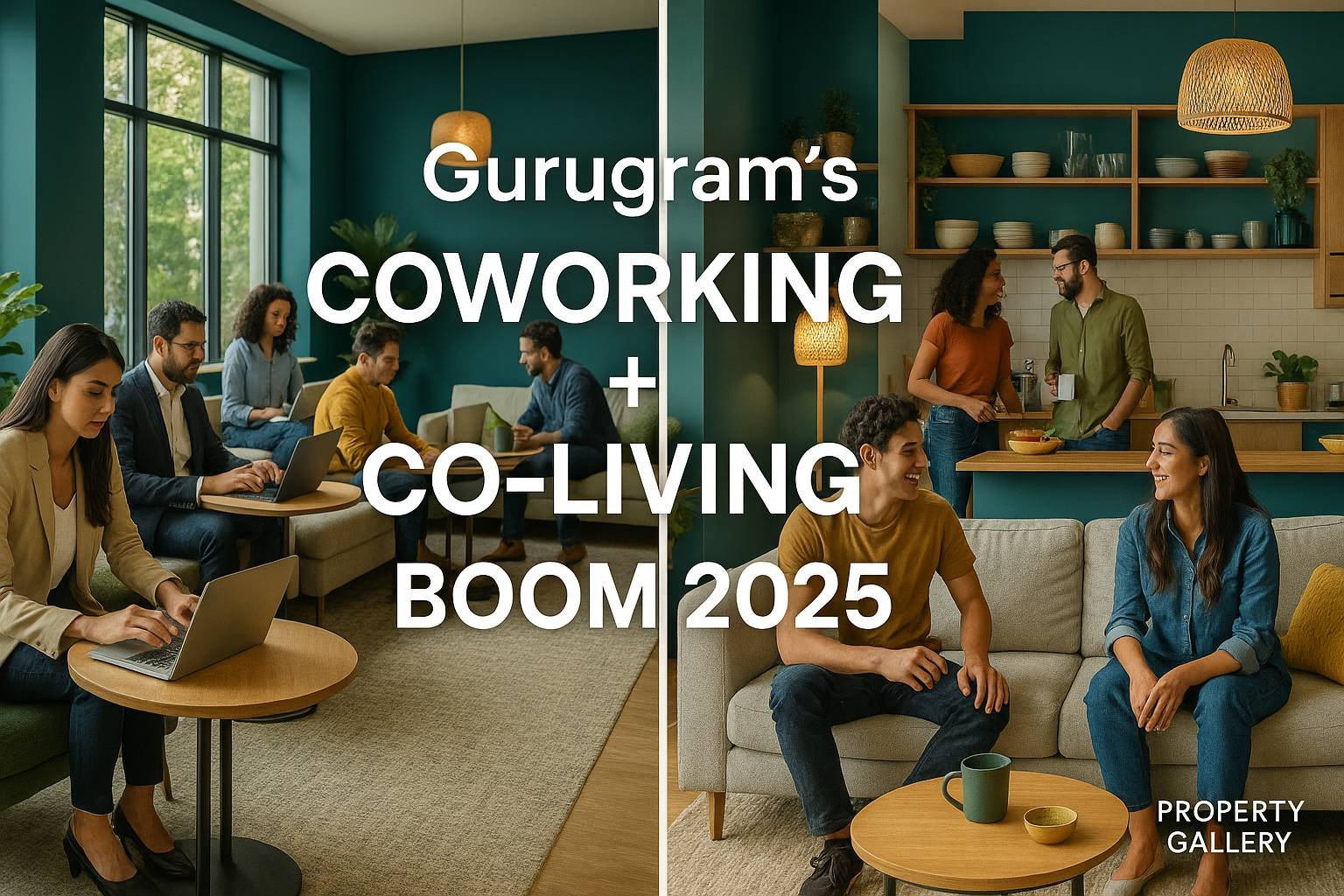Gurugram has quietly transformed into India's premier coworking and co-living hub, and it's reshaping the city's real estate narrative. Between flexible offices and community-driven homes, this dual boom is changing where and how people live, work, and invest. Here’s a full breakdown.
Coworking: Growth That Demands Attention
Gurugram is leading India’s coworking revolution:
In 2024, India’s coworking sector leased 12.5 million sq ft, with Gurugram contributing significantly—19% rise in monthly rentals, from ₹8,500 to ₹10,100 per seat between 2020 and 2024 (Hashville, RealtynMore).
New Grade-A hubs are popping up across Golf Course Road, Sector 54, and Paras Twin Towers, including UrbanVault’s 35,000 sq ft launch with ~700 premium seats at ₹12,000 per month (The Economic Times).
Gurugram now commands nearly 20% of India’s flexible workspace absorption, driven by hybrid work and startups (Hashville).
Why it matters:
Coworking demand drives office-to-residential conversion, making nearby rentals prime real estate. It boosts property values in embedded residential corridors and supports sustainable rental yields.
Co-Living: Community Meets Convenience
Co-living is also soaring in Gurugram:
The Indian co-living market is expected to grow from 0.3 million beds in 2025, with penetration projected to exceed 10% by year-end (Colliers, Vocal).
Notably, Gurugram’s co-living sector—valued at ~₹300 crore—has seen 23% annual growth, outpacing even Bangalore (Vocal).
Young professionals, millennials, and expats favor the flexibility, affordability, and community aspects—many willing to pay ₹10,000–15,000 monthly (Vocal).
Why this is a trend:
Co-living merges affordable living with high value—amenities like kitchens, lounges, and coworking corners help residents save up to 30% on living costs (Destino Landbase Pvt. Ltd.).
Real Estate Ripple Effects
Segment
How It Impacts Real Estate
Coworking
Drives office rental demand and supports nearby residential colonies, increasing ROI for integrated locations.
Co-Living
Stabilizes rental yields (6–9%), reduces vacancies, and attracts long-term community tenants (SOBHA Limited).
Hybrid Demand
Creates new micro-markets with 2–3 BHK units doubling as work-friendly homes.
Investor Preferences
Increases attractiveness of short-term rental models over long lock-in schemes.
Why Gurugram Leads the Charge
Gurugram’s growth isn’t random it’s structural:
Business: Over 250 Fortune 500 companies anchor the city's office demand, fueling need for flexible workspaces (Times Property, Hashville).
Connectivity: With the Rapid Metro expansion being planned (~188 km extension by 2027) and proximity to IGI Airport, commuting becomes seamless (Wikipedia).
Demographics: A young, mobile workforce (75% under 35) drives community-centric living (Vocal).
Affordability Pressure: High incomes and expensive real estate encourage alternative models like coworking and co-living (Vocal, Wikipedia).
Challenges to Navigate
Privacy vs Community: Co-living demands careful design to balance shared spaces with personal comfort (Vocal).
Operational Oversight: Returns depend on strong community management and upkeep.
Regulatory Framework: These models often fall outside traditional housing regulations—buyers must understand contracts.
Market Saturation: Excessive coworking supply may cause rental compression.
How Buyers & Investors Can Leverage This
For Homebuyers: Look for 2–3 BHK units near coworking hubs and shortened commutes—with amenities supporting work-from-home lifestyles.
For Investors: Target co-living-ready projects or convert standalone units. These can yield 6–9% returns—better than pure rentals (SOBHA Limited, Vocal, Hashville, Destino Landbase Pvt. Ltd.).
For Developers: Integrate coworking and co-living zones within residential layouts to gain premium listing, enhanced ESG appeal, and community vibe.
What Lies Ahead in 2025
Coworking likely to occupy 15–20% of total office stock by 2025—Gurugram remains a leader (Hashville).
Co-living penetration may double, thanks to affordability concerns (Colliers, Vocal).
Hybrid homes with smart infrastructure, high-speed internet, and shared spaces will be the new standard.
Regulatory clarity (e.g. for shared living contracts) may be the next frontier.
Final Thoughts
Gurugram's co-working and co-living surge signals a real estate evolution—a shift from static ownership to flexible, community-focused living and working. For homebuyers, it means better lifestyle alignment; for investors, higher yields; for developers, smarter design; and for the city, modern vibrancy.
At PropertyGallery.in, we track these trends, curate hybrid-ready properties, and assist in maximizing returns through dynamic living models. Ready to explore flexible homes or lease opportunities?
